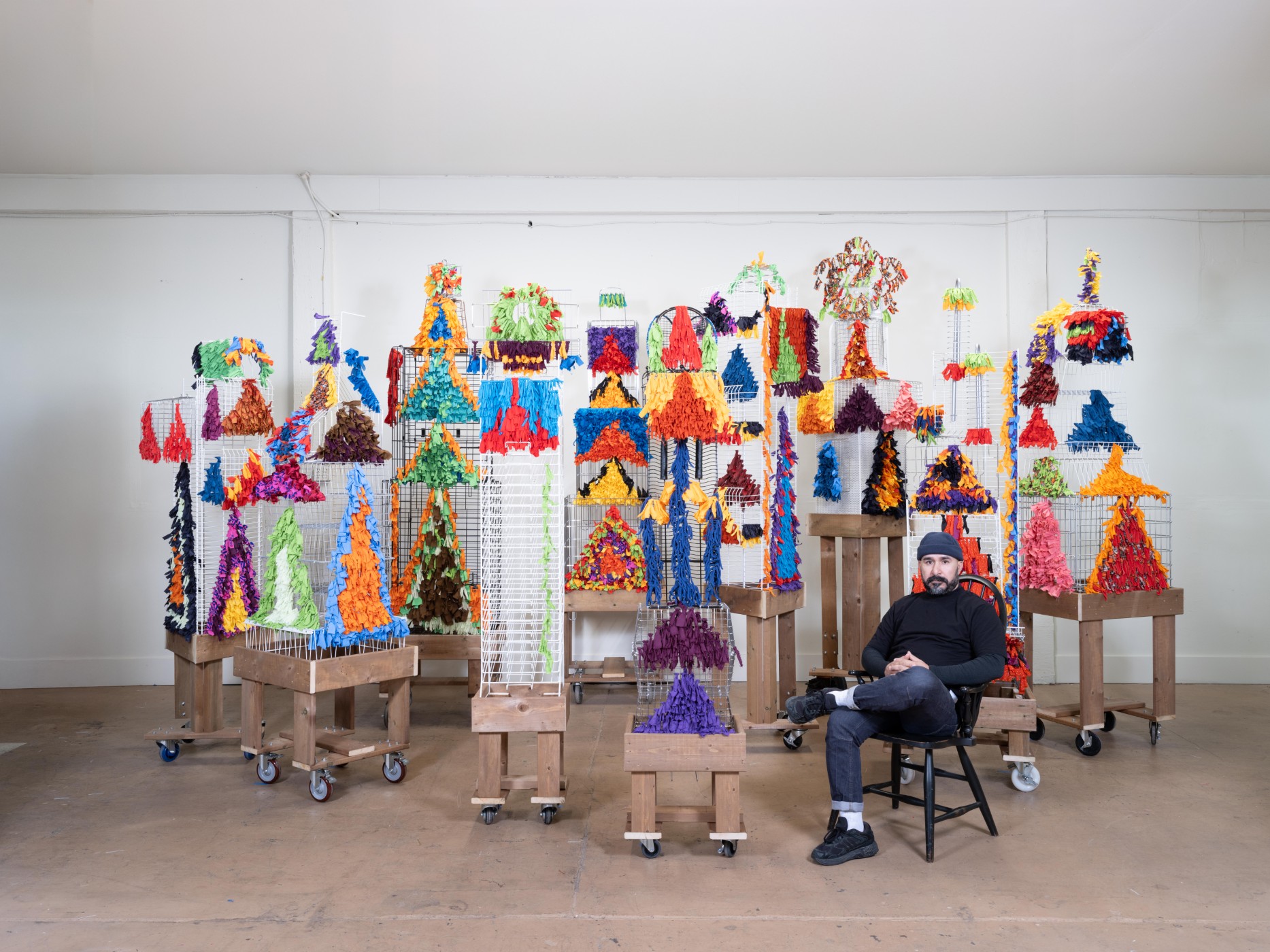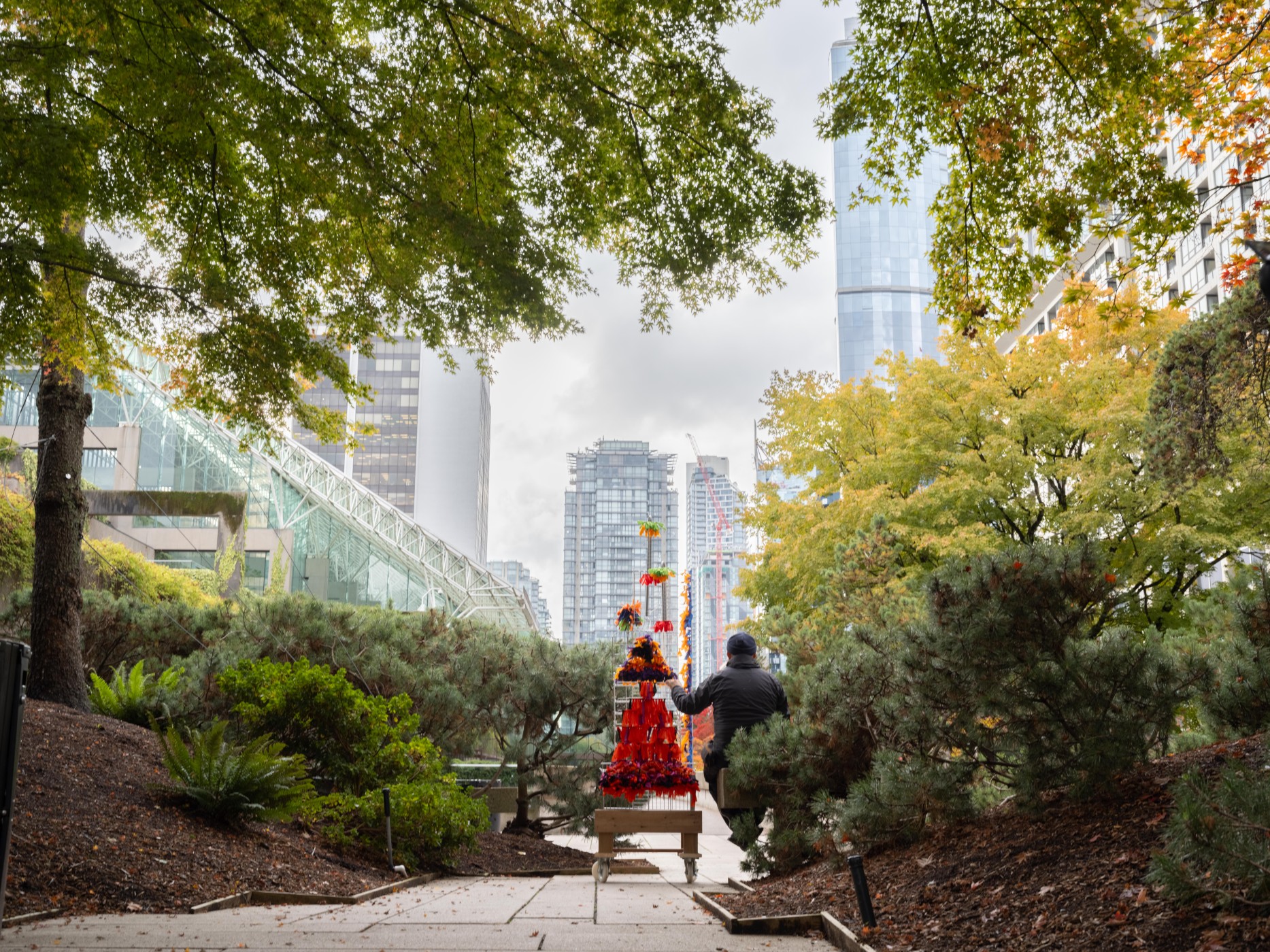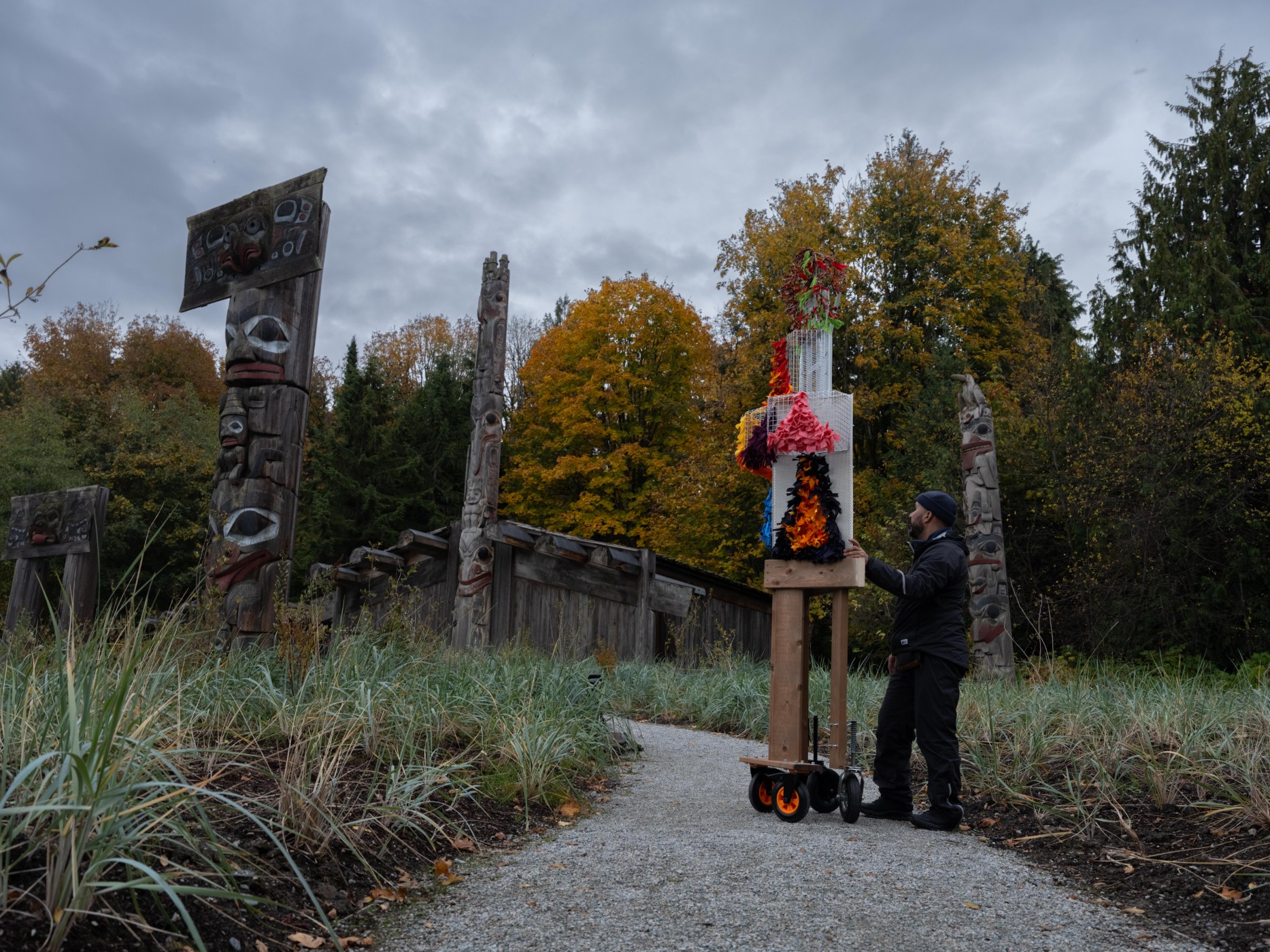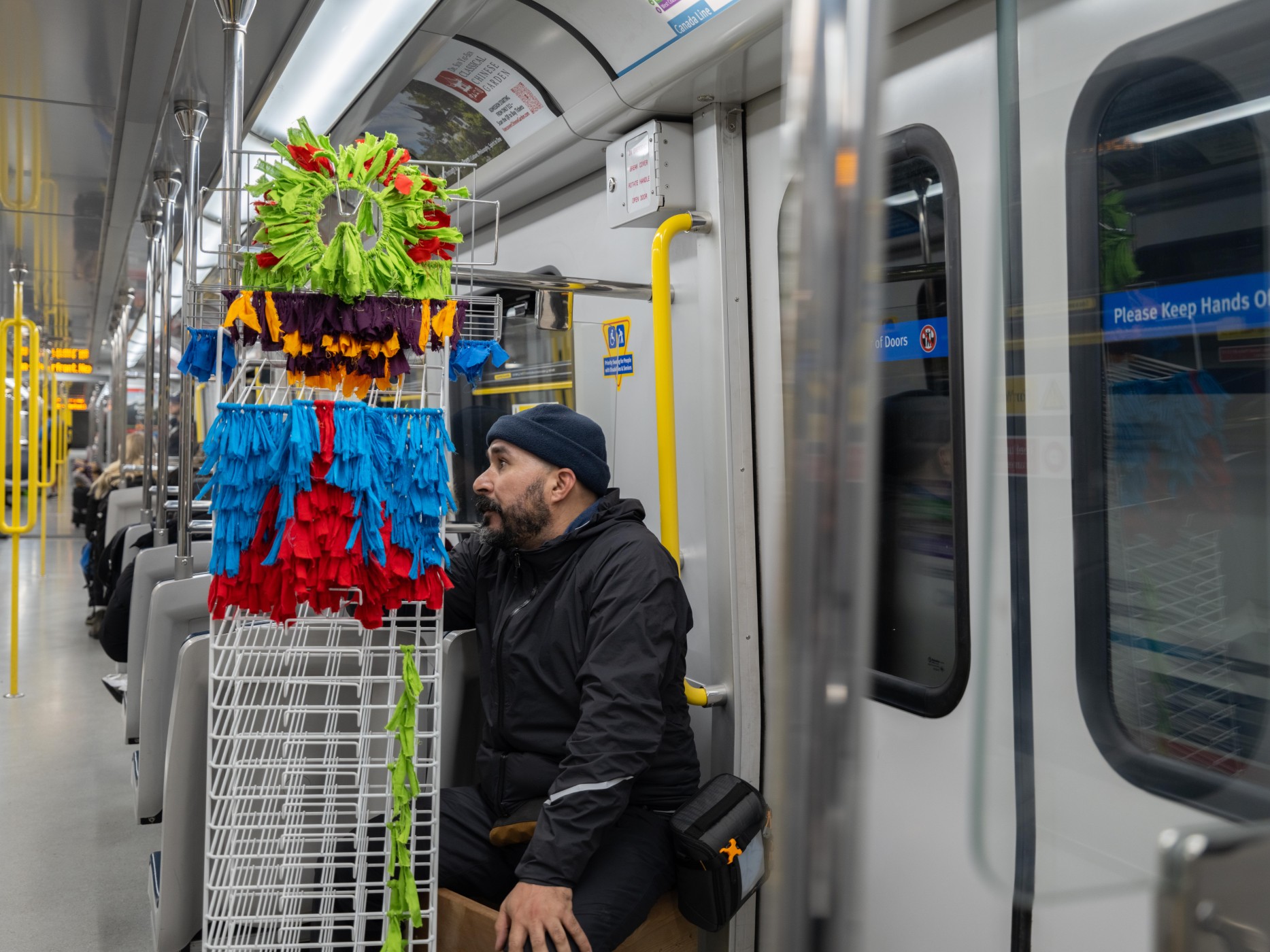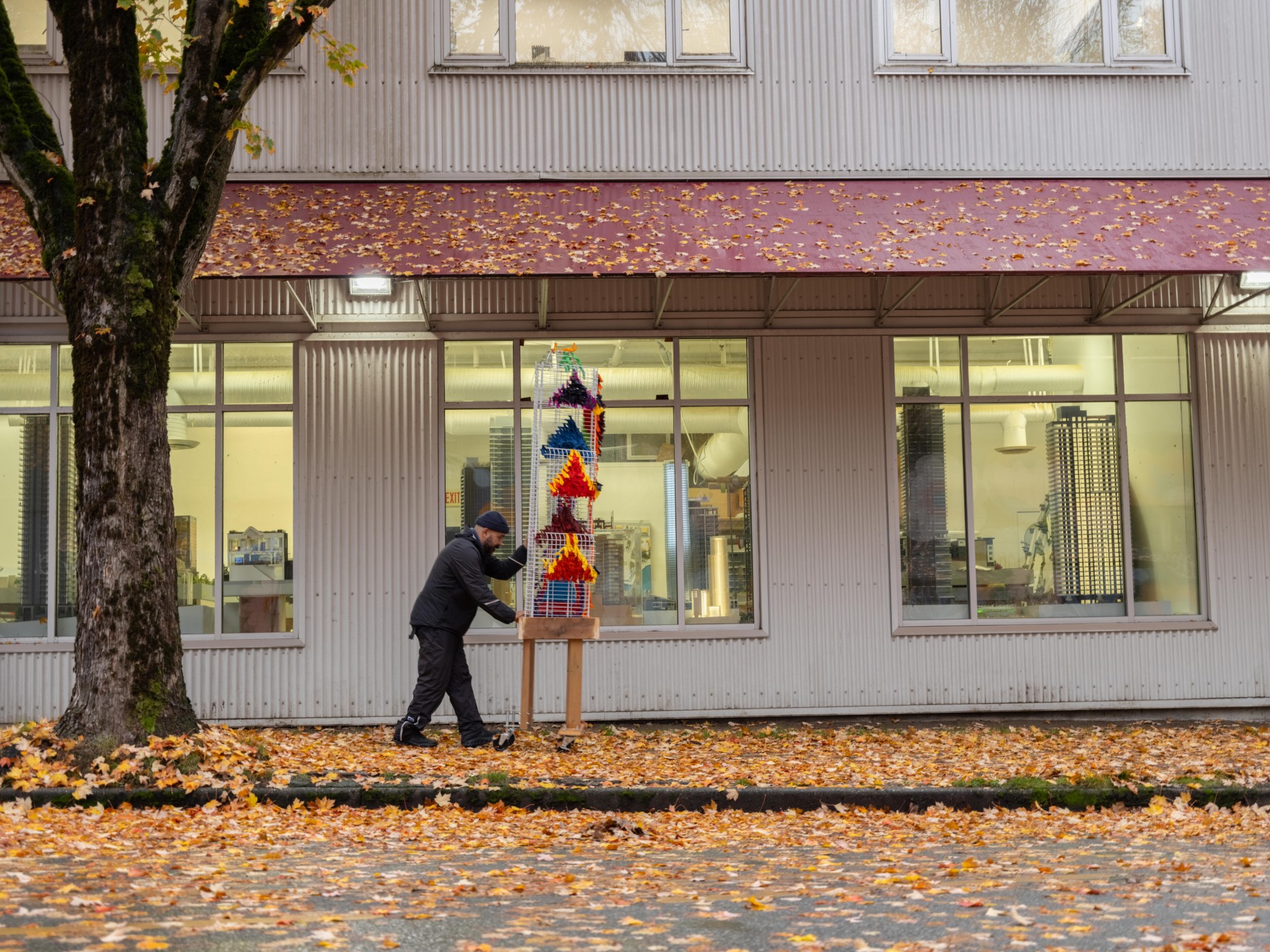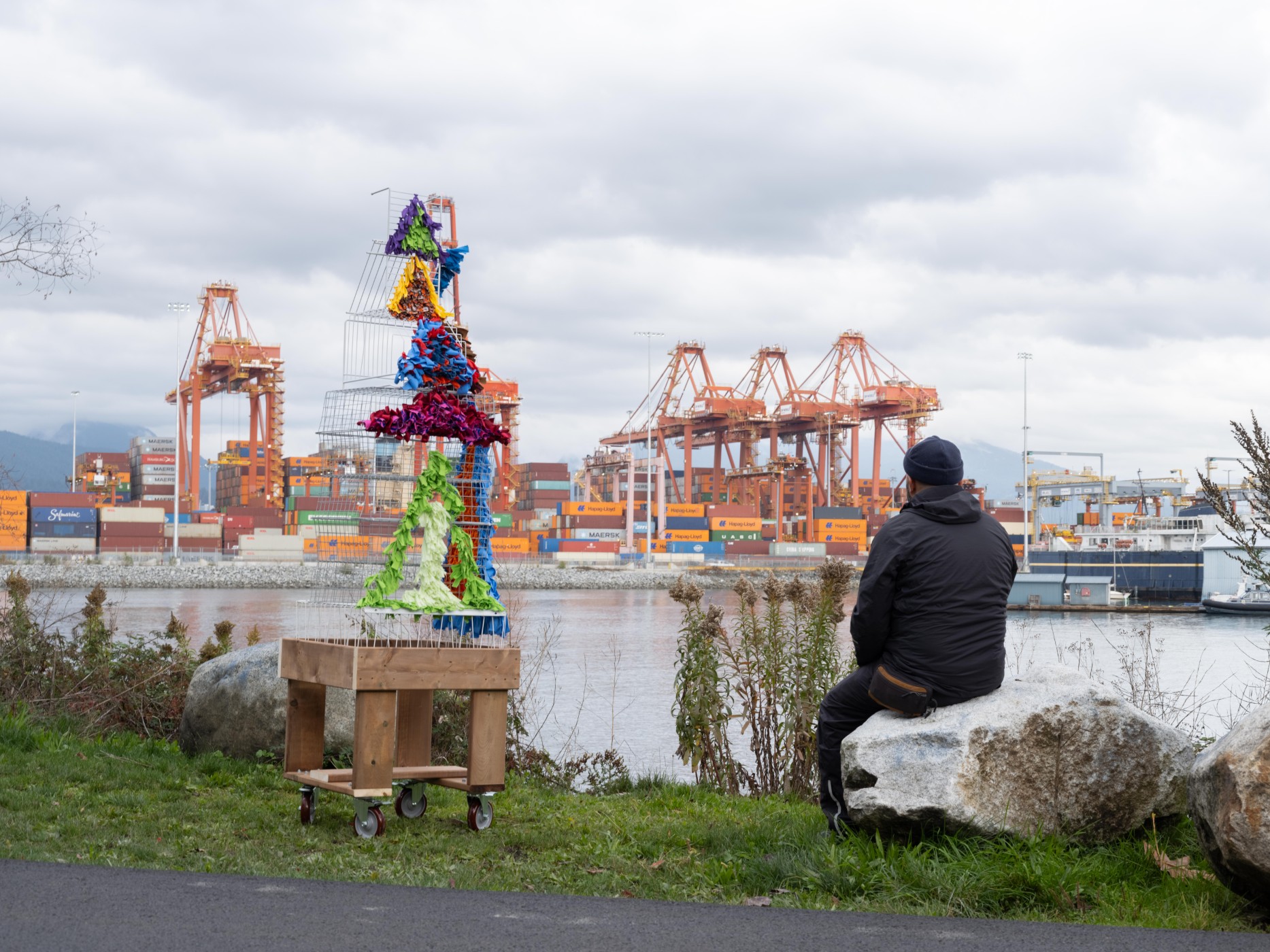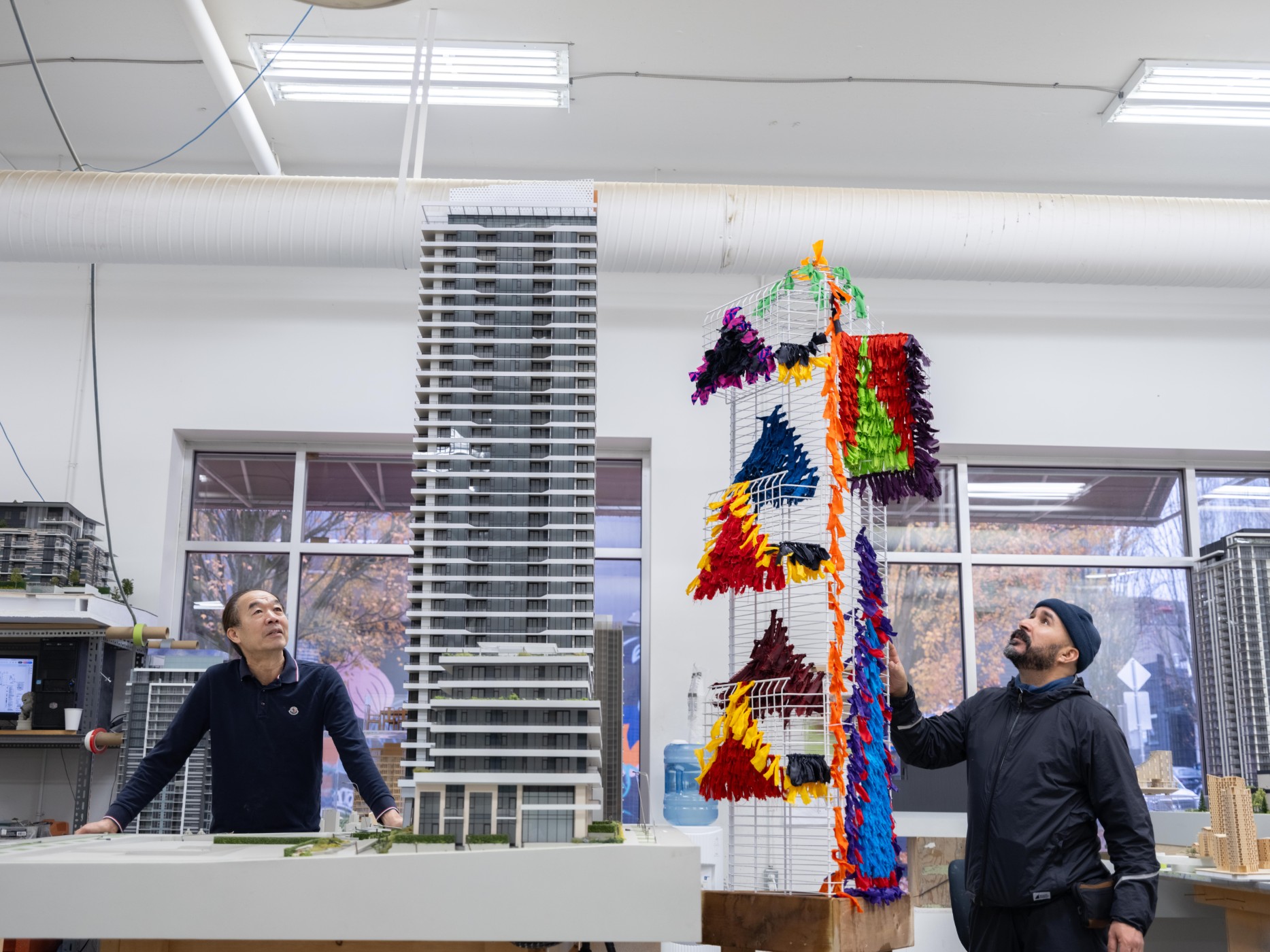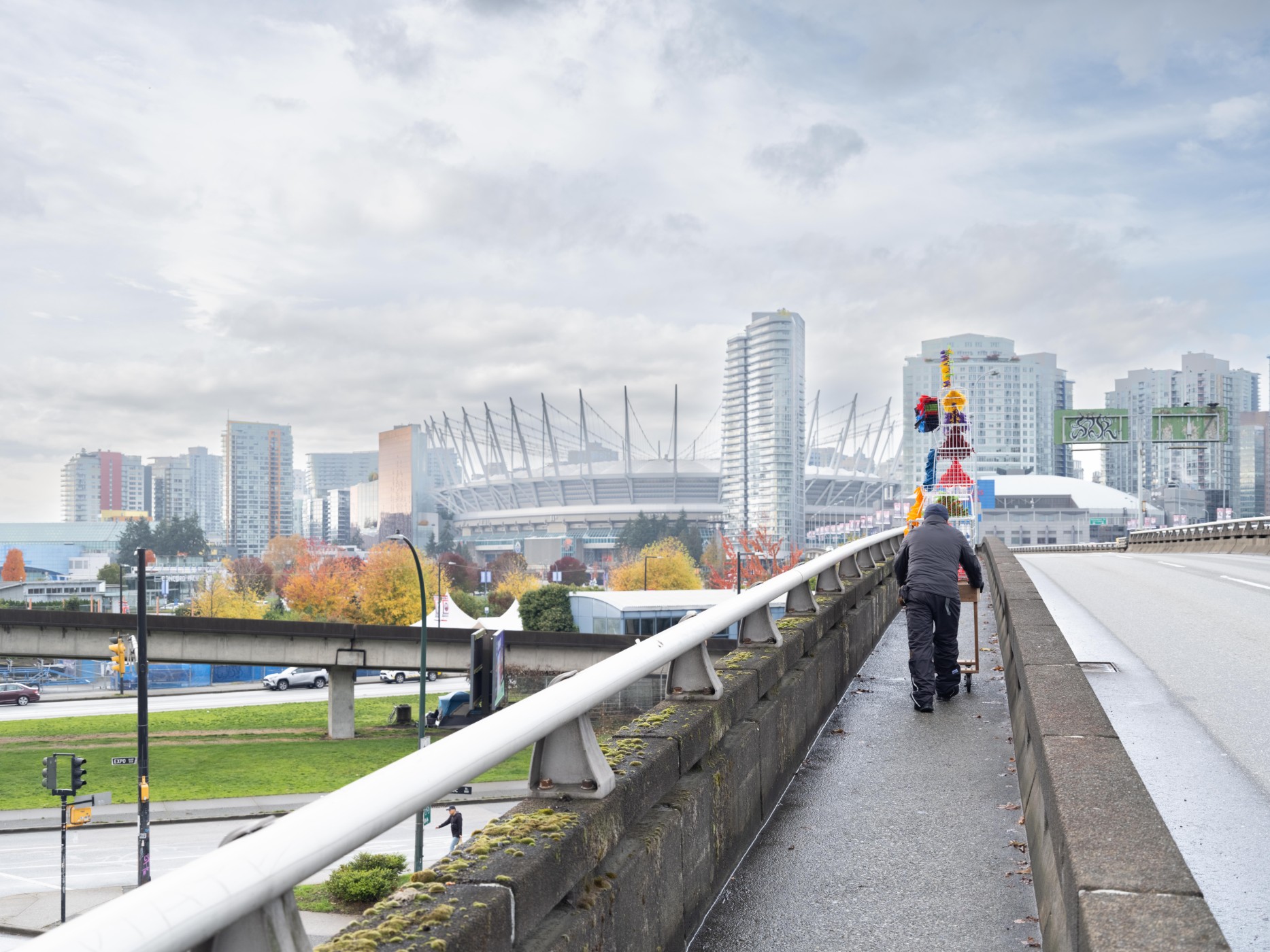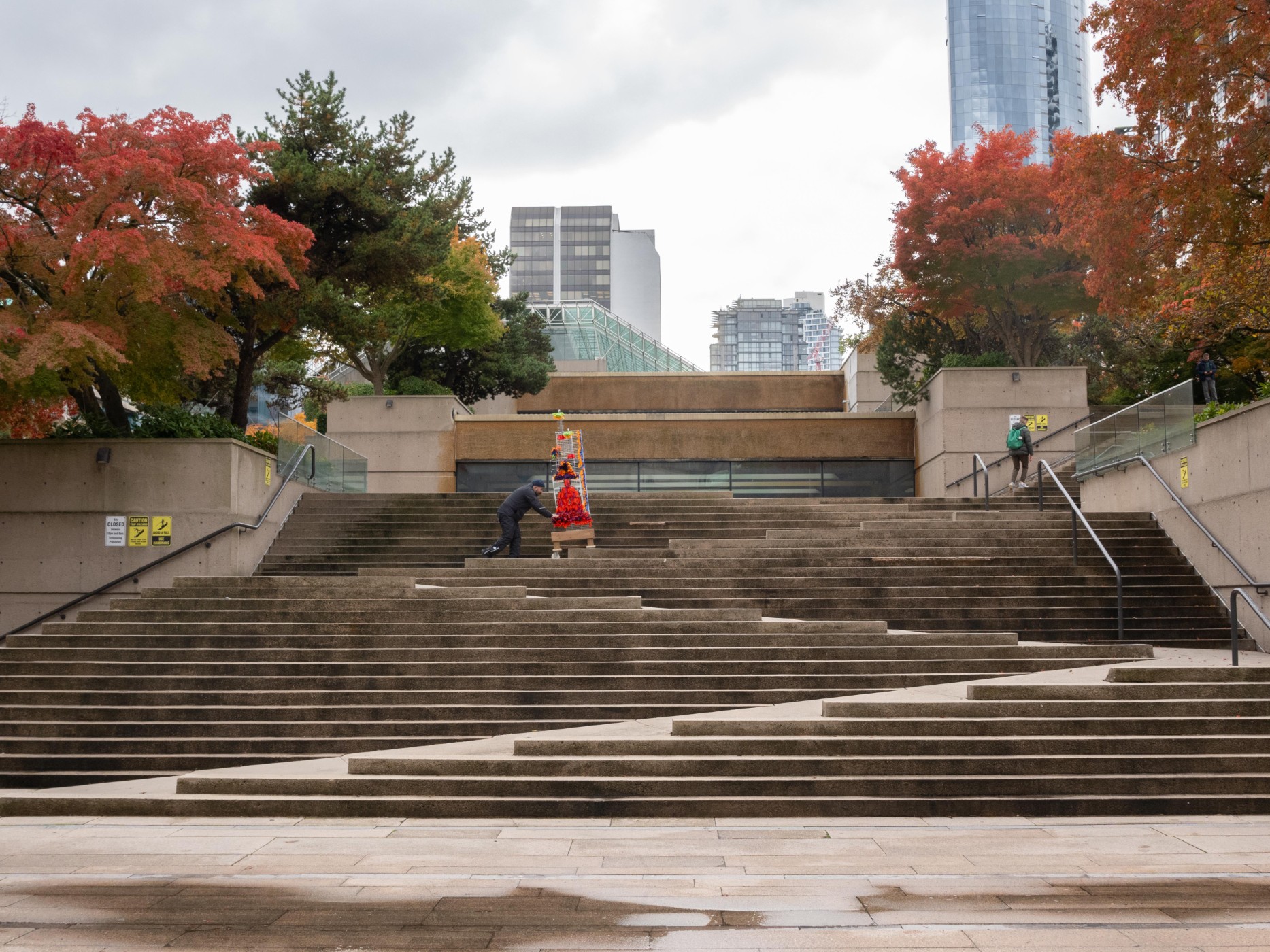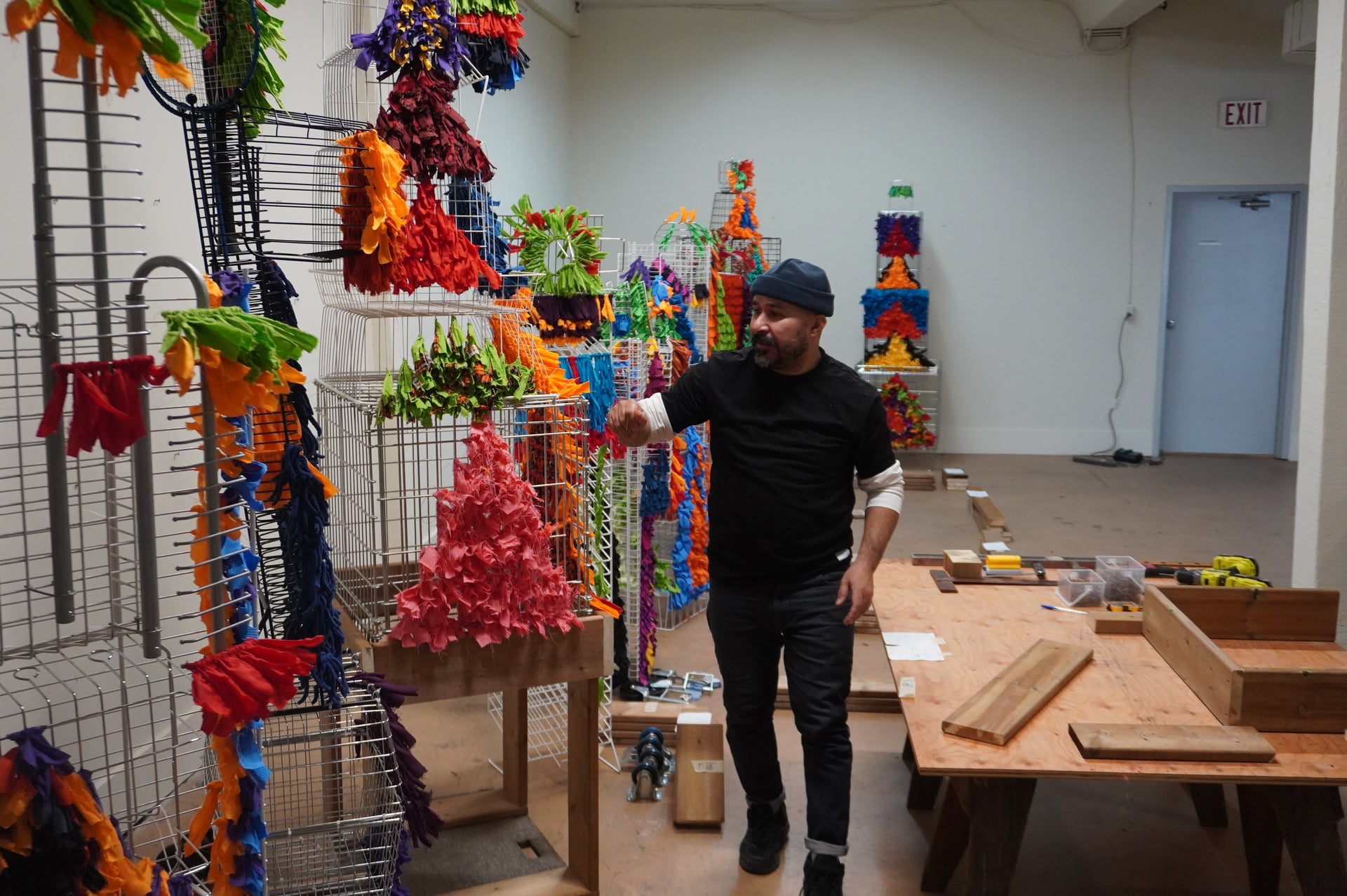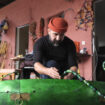Skin of the City
Mohamed Arejdal, Morocco
Description
Skin of the City
Beneath the Skyline
Medium: reused metal objects, fabric, wood, casters
Dimensions: variable
Photography by: Khim Mata Hipol; Videography by: Bora Yanel
This project takes shape as an installation of ten vertical structures inspired by the skyline of Vancouver, a city that rises between ocean and mountain, between nature and modernity. Each stands between two and three metres tall—slender, closely arranged bodies built from found metallic objects: racks, grids, baskets, kitchen tools, and other familiar materials from everyday life. Together they form a horizon of their own, an imagined city constructed from what remains of the real one.
Each piece consists of two parts: an upper structure made of reused metal objects, and a wooden base fitted with wheels. This division is not simply formal but archaeological. It reorders the relationship between what is above and what is beneath, between image and foundation, between the visible and the buried. The wood recalls the forests that once covered this land, and the ground uprooted to build the city. The metal embodies the system of urban modernity that replaced it. The wheels speak of movement—of displacement, of migration, of the ongoing journey of those who continue to move within and beyond this city.
In creating the work, I treated the metallic grids as contemporary looms, weaving bright strips of fabric across their surfaces. This technique draws on the Amazigh Boucherouite rug, traditionally handwoven from fragments of discarded cloth. The weaving reconnects the cold geometry of metal with the living rhythm of textile, reviving the spirit of nomadic craft within a contemporary context. Each surface becomes a kind of skin—a meeting point between the industrial and the human, the mechanical and the ancestral.
The woven patterns rise in repeating triangles that point toward the sky, recalling the shapes of pine trees and mountains—symbols of hope and endurance that belong to many cultures. Seen together, these ten structures form a symbolic skyline: a miniature city of fabric and steel, of roots and ruins, of permanence and movement.
Through Skin of the City, I reflect on what lies beneath the urban image: the histories that persist under the surface, the stories that continue to move through the foundations of place.
